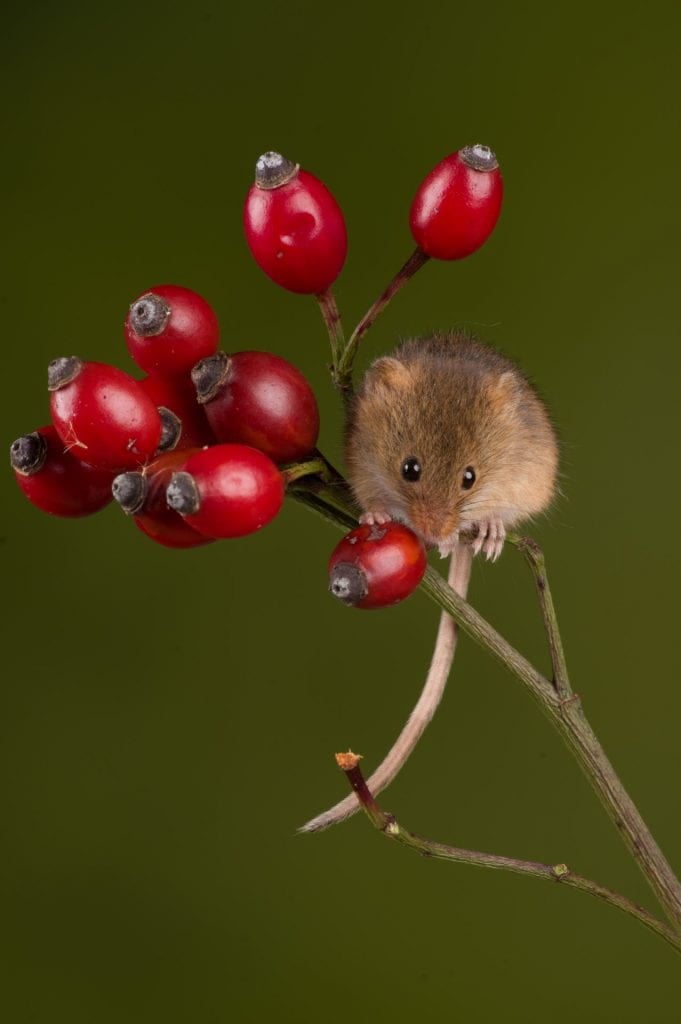Harvest mice aren’t just incredibly cute, they are also Britain’s smallest rodent, known by the scientific name Micromys minutus. What makes them special is that they have a prehensile tail: this means they can use it like a fifth limb, curling it round stems as they go up and down, or to grip on like an anchor to help them keep their balance. Having an opposable outer toe also helps them to hold onto stems as they climb. Another interesting feature about harvest mice is that they build distinctive spherical nests above ground, amongst vertical stems, made out of woven grass.
They live approximately a year to eighteen months in the wild, and unlike hazel dormice don’t hibernate. Harvest mice weigh approximately 6-8 grams (just a bit less than a fifty pence coin!) and not including their tails are about 5-6cm long. The fur on their dorsal side is golden brown and they have a bright white tummy. Juveniles are often greyish-brown in colour and the mice get more gingery as they get older. They have small, hairy vole-like ears that are less prominent than those of wood or house mice, and small, bright beady eyes. They are incredibly agile, move very fast, and being at the bottom of the food chain are very wary of predators, dropping down to the ground if spooked. They make some ultrasound calls, and can be picked up on bat detectors.

According to The Review of the Population and Conservation Status of British Mammals carried out by the Mammal Society in 2018, very little is known about population data. They are concerned that they have become much more scarce in recent years, and in 2021 started the National Harvest Mouse Survey to find out more. Furthermore, the IUCN-approved Red List of British Mammals now classifies the harvest mouse as Near Threatened in Great Britain and Critically Endangered in Scotland, so the more we can find out about harvest mice in Devon and how they are faring, the more we can do to protect them.